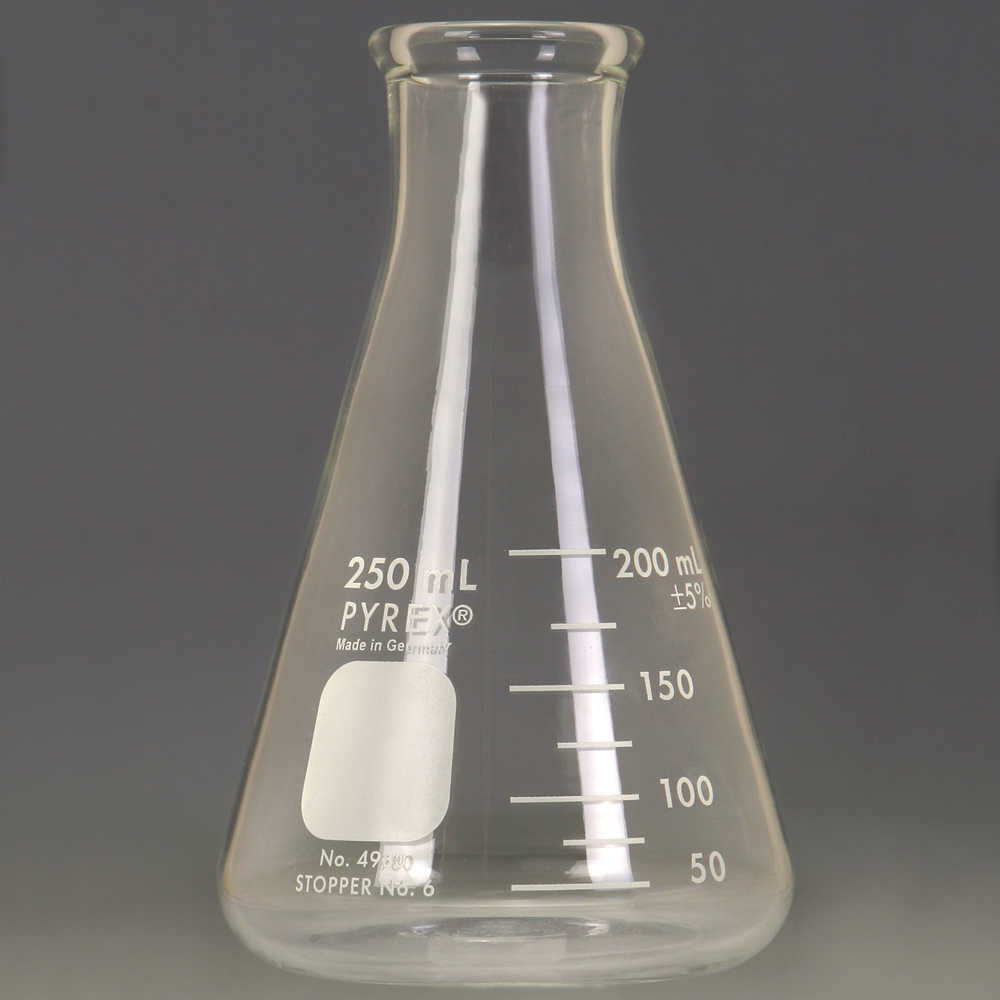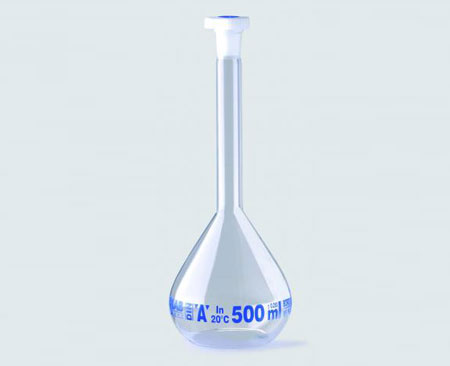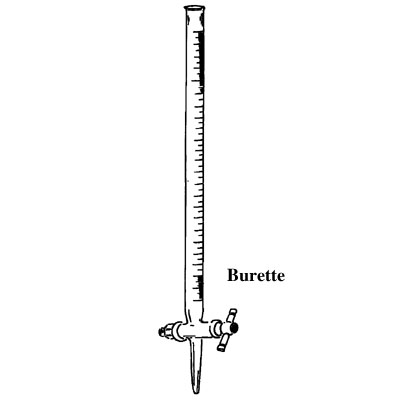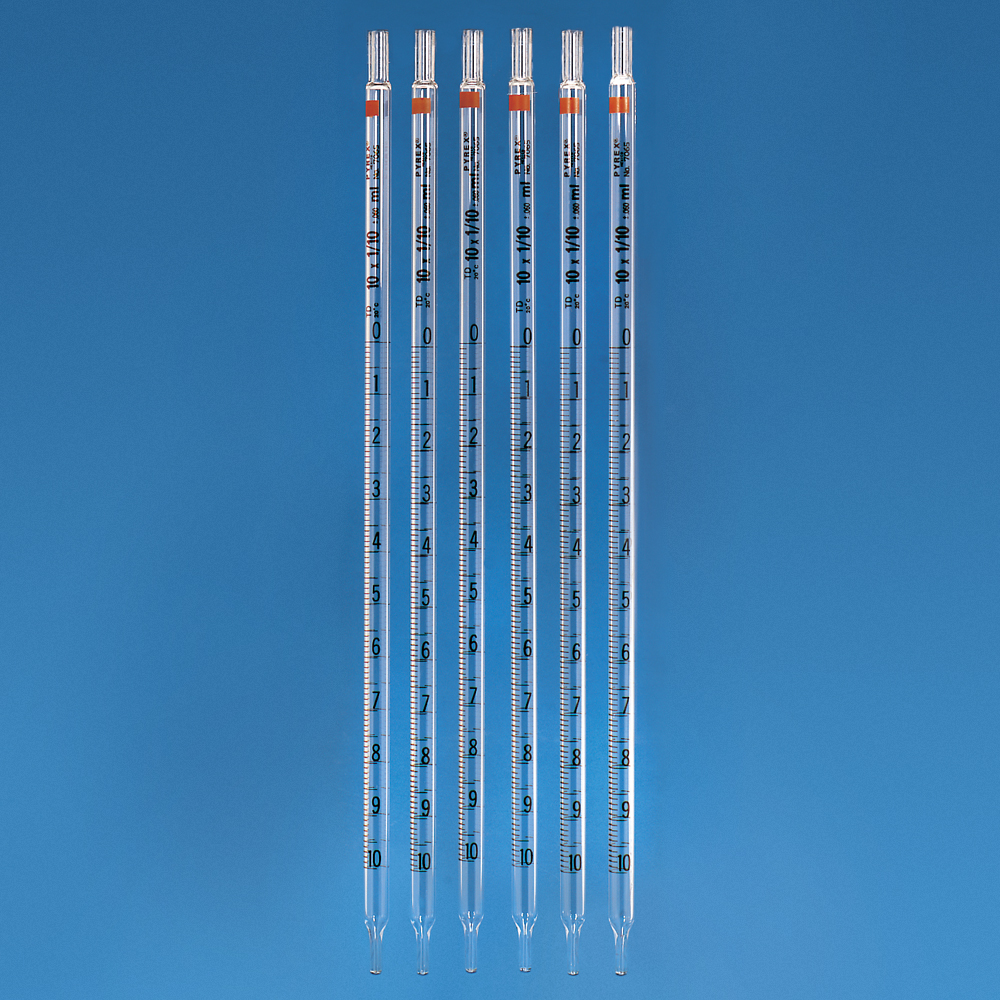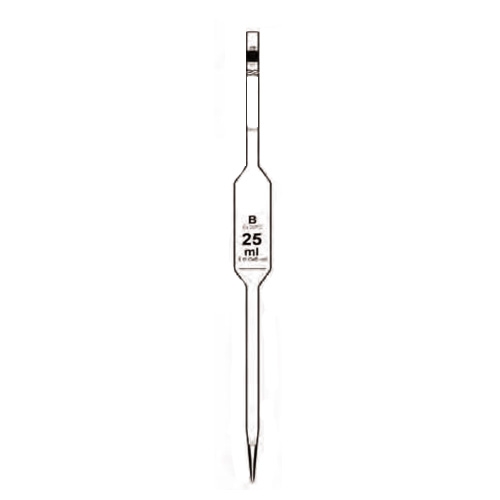What is the tool that scientists commonly use to measure liquid volume?
1 Answer
Sep 13, 2016
There isn't a single tool. We have many different glassware that we can use, and some have greater precision (number of known digits, plus one guessed decimal place) than others.
Typical glassware that can measure liquid volume are:
- Graduated Cylinders (generally uncertainties are in the tenths place, since the index markings are at each integer)
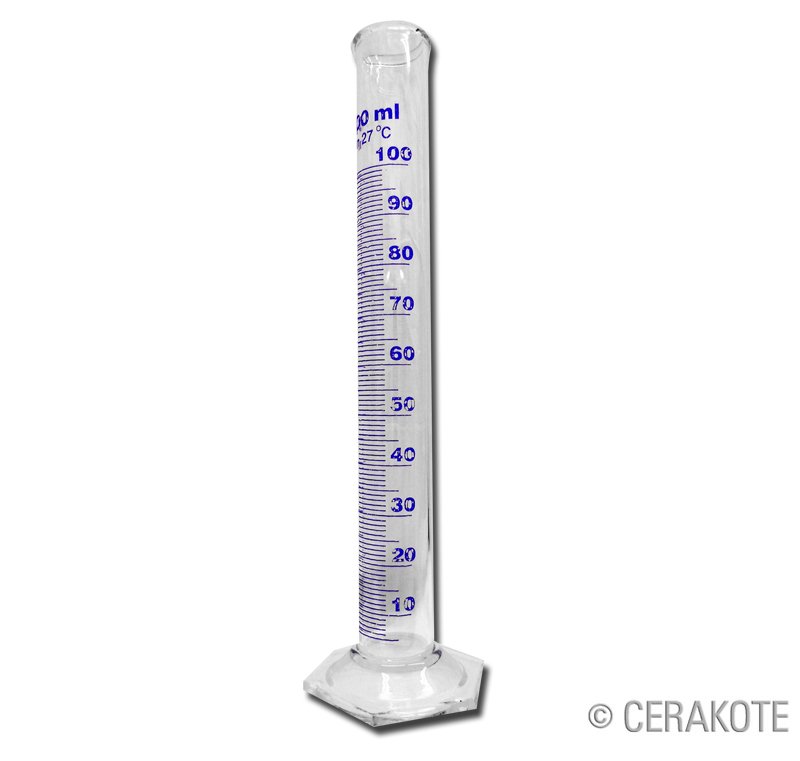
- Erlenmeyer Flasks (generally uncertainties are fairly high depending on the flask volume, so this is mainly a reaction vessel but can be used to approximate volume)
- Volumetric Flasks (often calibrated for containing or delivering a specific volume, great for measuring exact volumes. These often have uncertainties in the hundredths place, such as
#100.00 pm "0.02 mL"# , when you properly measure to the index mark.)
- Burettes (fairly common; used in titrations fairly often, with an uncertainty usually in the hundredths place. For example,
#100.00 pm "0.10 mL"# for a to-deliver burette.)
- Graduated Pipettes (not too common, but you might see these. I used these several times, and kept a collection of them throughout my quantitative classes. Requires a bulb.)
- Volumetric Pipettes (hard to get right for undergrad students, but they are often made to deliver exactly to the hundredths place or so, when properly measured to the index marking. For example, you can get
#10.00 pm "0.01 mL"# on a Class A [to deliver] volumetric pipette.)
As chemists, we have all these tools (and more) to measure liquid volume, depending on the situation.
- If we only need to estimate or get rough quantities, graduated cylinders and Erlenmeyer flasks are OK for the job.
- Often in quantitative situations, volumetric pipettes and volumetric flasks are preferred, particularly when you are trying to measure a very specific volume.
- Graduated pipettes are used as well in quantitative situations sometimes. At least, I used them quite a bit.

